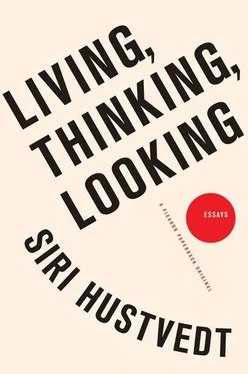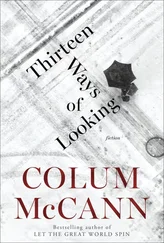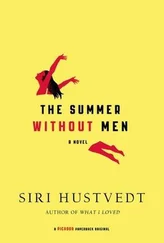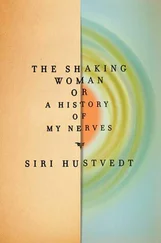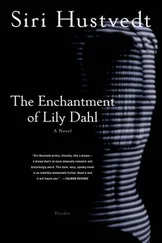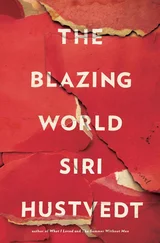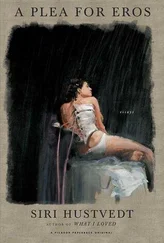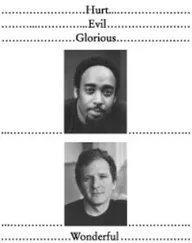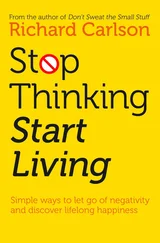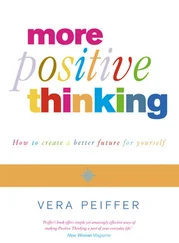No one ever died of a migraine. It isn’t cancer, heart disease, or a stroke. With a life-threatening disease, your attitude — whether bellicose or Buddhist — cannot keep you alive. It may simply change how you die. But with my migraines that continue to arrive and no doubt always will, I have found that capitulation is preferable to struggle. When I feel one coming on, I go to bed, and now machineless, I do my relaxation exercises. My meditations aren’t magical, but they keep the worst pain and nausea at bay. I do not welcome my headaches, but neither do I see them as alien. They may even serve a necessary regulatory function, by forcing me to lie low, a kind of penance, if you will, for those other days of flying high.
2. “CURIOUSER AND CURIOUSER”
“‘Who in the world am I?’ Ah, that’s the great puzzle!” says Lewis Carroll’s Alice after experiencing a sudden, disorienting growth spurt. While she meditates on this philosophical conundrum, her body changes again. The girl shrinks. I have asked myself the same question many times, often in relation to the perceptual alterations, peculiar feelings, and exquisite sensitivities of the migraine state. Who in the world am I? Am “I” merely malfunctioning white and gray matter? In The Astonishing Hypothesis Francis Crick (famous for his discovery of the DNA double helix with James Watson) wrote, “You, your joys and your sorrows, your memories and ambitions, your sense of personal identity and free will, are, in fact, no more than the behavior of a vast assembly of nerve cells and their associated molecules.” 1Mind is matter, Crick argued. All of human life can be reduced to neurons.
There is a migraine aura phenomenon named after Charles Lutwidge Dodgson’s (Lewis Carroll’s) story of myriad transformations: Alice in Wonderland syndrome. The afflicted person feels that she or parts of her are ballooning or diminishing in size. The neurological terms for the peculiar sensations of growing and shrinking are macroscopy and microscopy. Dodgson was a migraineur. He was also known to take laudanum. It seems more than possible that he had experienced at least some of the somatic oddities that he visited upon his young heroine. These experiences are not unique to migraine. They are also seen in people who have suffered neurological damage. In The Man with a Shattered World, A. R. Luria recorded the case of a patient, Zazetsky, who suffered a terrible head injury during the Second World War. “Sometimes,” Zazetsky wrote, “when I’m sitting down I suddenly feel as though my head is the size of a table — every bit as big — while my hands, feet, and torso become very small.” 2Body image is a complex, fragile phenomenon. The changes in the nervous system wrought by an oncoming headache, the lesions caused by a stroke or a bullet, can affect the brain’s internal corporeal map, and we metamorphose.
Is Alice in Wonderland a pathological product, the result of a single man’s “nerve cells and their associated molecules” run amok? The tendency to reduce artistic, religious, or philosophical achievements to bodily ailment was aptly named by William James in The Varieties of Religious Experience . “Medical materialism,” he wrote, “finishes up Saint Paul by calling his vision on the road to Damascus a discharging lesion of the occipital cortex, he being an epileptic. It snuffs out Saint Teresa as an hysteric, Saint Francis of Assisi as a hereditary degenerate.” 3And, I might add, Lewis Carroll as an addict or migraineur. We continue to live in a world of medical materialism. People pay thousands of dollars to get a peek at their genetic map, hoping to ward off disease early. They rush to embrace the latest, often contradictory, news on longevity. One study reports it’s good to be chubby. Another insists that when underfed, our close relatives the chimpanzees live longer, and we would do well to follow suit. Republicans and Democrats are subject to brain scans to see what neural networks are affected when they think about politics. The media announces that researchers have found the “God spot” in the brain. Before the genome was decoded and scientists discovered that human beings have only a few more genes than fruit flies, there were innumerable articles in the popular press speculating that a gene would be found for alcoholism, OCD, an affection for purple ties; in short, for everything.
It is human to clutch at simple answers and shunt aside ambiguous, shifting realities. The fact that genes are expressed through environment, that however vital they may be in determining vulnerability to an illness, they cannot predict it, except in rare cases, such as Huntington’s disease; that the brain is not a static but a plastic organ, which forms itself long after birth through our interactions with others; that any passionate feeling, whether it’s about politics or tuna fish, will appear on scans as activated emotional circuits in the brain; that scientific studies on weight and longevity tell us mostly about correlations, not causes; that the feelings evoked by the so-called “God spot” may be interpreted by the person having them as religious or as something entirely different — all this is forgotten or misunderstood.
The man who gave us Alice in Wonderland suffered from migraine. He was also a mathematician, a clergyman, a photographer, and a wit. He was self-conscious about a stammer and may have had sexual proclivities for young girls. It is impossible to know exactly what role migraine played in his creative work. My own experience of the illness — scotomas, euphorias, odd feelings of being pulled upward, a Lilliputian hallucination — figure in the story of myself, a story that in the end can’t be divided into nature or nurture. Migraine runs in families, so I probably have a hereditary predisposition to headaches, but the way the illness developed, and its subsequent meaning for me, are dependent on countless factors, both internal and external, many of which I will never penetrate. Who in the world am I? is an unsolved question, but we do have some pieces to the puzzle.
As Freud argued over a century ago, most of what our brains do is unconscious, beneath or beyond our understanding. No one disputes this anymore. The human infant is born immature, and in the first six years of its life, the front part of its brain (the prefrontal cortex) develops enormously. It develops through experience and continues to do so, although less rapidly than before. Our early life, much of which never becomes part of our conscious memory because it’s lost to infantile amnesia (our brains cannot consolidate conscious memories until later), is nevertheless vital to who we become. A child who has good parental care — is stimulated, talked to, held, whose needs are answered — is materially affected by that contact, as is, conversely, the child who suffers shocks and deprivations. What happens to you is decisive in determining which neural networks are activated and kept. The synaptic circuits that aren’t used are “pruned”; they wither away. This explains why so-called wild children are unable to acquire anything but the most primitive form of language. It’s too late. It also demonstrates how nurture becomes nature and why making simple distinctions between them is absurd. A baby with a hypersensitive genetic makeup that predisposes him to anxiety can end up as a reasonably calm adult if he grows up in a soothing environment.
So Crick was technically right. What seem to be the ineffable riches of human mental life do depend on “an assembly of nerve cells.” And yet, Crick’s reductionism does not provide an adequate answer to Alice’s question. It’s rather like saying that Vermeer’s Girl Pouring Milk is a canvas with paint on it or that Alice herself is words on a page. These are facts, but they don’t explain my subjective experience of either of them or what the two girls mean to me. Science proceeds by testing and retesting its findings. It relies on many people’s work, not just a few. Its “objectivity” rests upon consensus, the shared presuppositions, principles, and methods from which it arrives at its “truths,” truths which are then modified or even revolutionized over time. It should be noted that even the late Francis Crick wasn’t able to leap out of his subjective mental apparatus and become a superhuman observer of BRAIN.
Читать дальше
